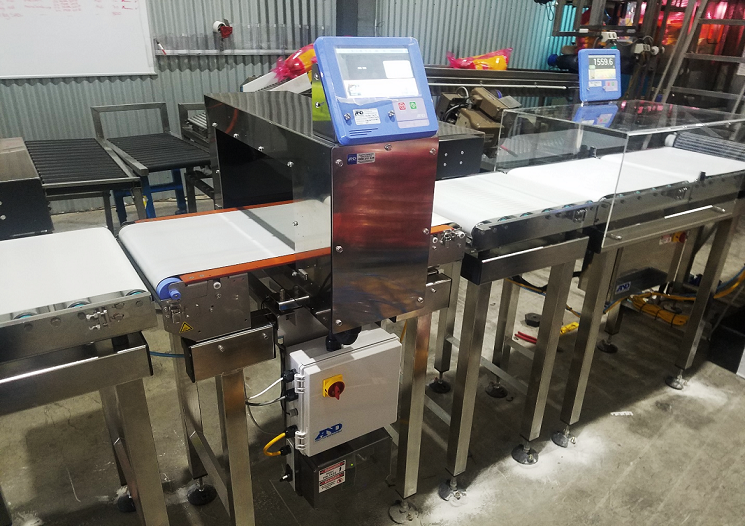
Hygiene and safe operations are imperative for all Australian food processing companies. In addition to bacteria such as salmonella and listeria, foreign objects can also cause contamination in food products.
Even with stringent processes and procedures in place, there is always the chance that foreign objects can make their way into products that can cause harm.
There are two primary methods for ensuring the quality of your product production line and detecting these foreign objects: food metal detectors and x-ray inspection systems.
Which of these systems is best for your food processing operations?
This article will explore the paybacks of each and when they should be applied for maximum benefit.
Product recalls in Australia

All food processing organisation would like to believe that its operations are completely fool-proof and that a product recall is unlikely to occur. But the bottom line is, despite our best efforts, food products can become contaminated and product recalls have been on the rise in recent years.
| 2011 | 2012 | 2013 | 2014 | 2015 | 2016 | 2017 | 2018 | 2019 | 2020 | Total | |
| Undeclared allergen | 24 | 18 | 16 | 27 | 39 | 33 | 35 | 46 | 32 | 51 | 321 |
| Microbial contamination | 13 | 25 | 12 | 26 | 12 | 21 | 9 | 20 | 30 | 27 | 195 |
| Foreign matter | 16 | 11 | 7 | 14 | 7 | 7 | 9 | 16 | 5 | 11 | 103 |
| Other | 4 | 2 | 3 | 4 | 6 | 3 | 10 | 8 | 12 | 10 | 62 |
| Biotoxin | 4 | 1 | 2 | 3 | 15 | 5 | 4 | 2 | 3 | 2 | 41 |
| Chemical/ contaminant | 5 | 2 | 0 | 1 | 0 | 1 | 1 | 2 | 4 | 6 | 22 |
| Labelling | 1 | 1 | 2 | 1 | 2 | 2 | 1 | 6 | 1 | 2 | 19 |
| Total | 67 | 60 | 42 | 76 | 81 | 72 | 69 | 100 | 87 | 109 | 763 |
Food Standards Australia New Zealand (FSANZ) co-ordinated 763 product recalls between 2011 and 2020 which included a peak of 109 recalls in 2020 alone (compared to 67 recalls in 2011 and 42 in 2013). This increase is also linked to many companies becoming more aware of product safety and initiating these recalls voluntarily to avoid any harm coming to their consumers.
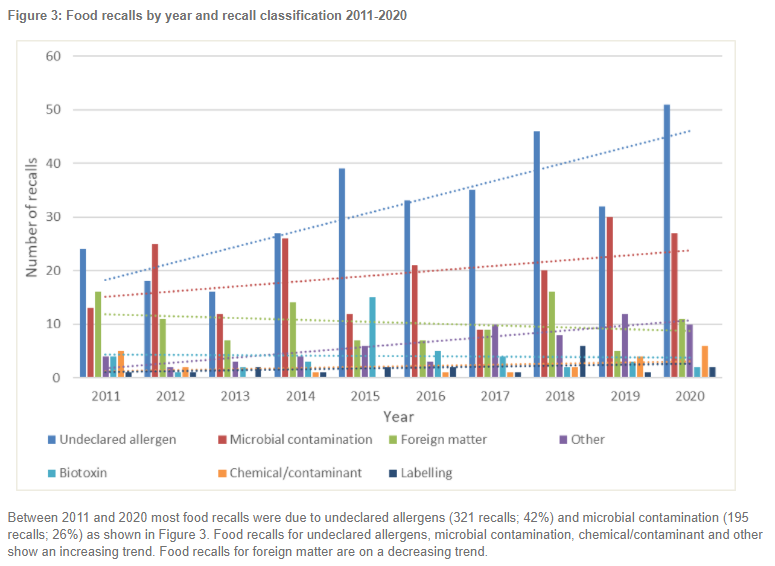
Protecting your brand and avoiding product recalls
Product recalls can harm your brand in many ways. Firstly, and most obvious, are the safety issues that come with contaminated food products. Fragments of plastic, metal, wood, glass, or other foreign materials can cause great harm to consumers.
If a consumer is harmed by these products and the company found to have been negligent in its operations, the potential for a company to be implicated in a lawsuit can cost millions and have serious consequences by damaging the company’s reputation.
However, product recalls can be damaging in other ways. Labour costs and costs to reproduce the product, all add up to a considerable amount of time and money, and ultimately can be incredibly damaging to a company’s bottom line.
It is not just the wallet where food processing companies are hit, their image is also impacted as well. Product recalls are generally reported by the media and can tarnish your reputation. Consumers will associate your brand with defective or dangerous products and are likely to discontinue purchasing from your company.
This is amplified in the modern age by social media which can lead to contracts with retail chains and stores being terminated. So, as you can see, there are not just the direct costs associated with product recalls, but numerous indirect expenses as well, adding up to a large sum of money and damage to your brand.
Food safety inspection systems – foreign body detection methods
To prevent dangerous foreign objects and contaminants from making their way into food products, it is essential to include monitoring devices on the production line to detect them before they reach retail shelves and the hands of the consumers. The two primary systems are x-ray inspection systems and metal detectors.
Choosing the right systems for the right application is vital for the safe operations of your food processing company, and also for your customers. The first step is assessing your production line and identifying the possible contaminants that could potentially get into the products.
If metal is the only possible foreign object that could contaminate your products, then metal detection systems become imperative. Because these inspection systems are specialised for metal detection, they are going to pick up even trace amounts of metals that are low density (like aluminium). This includes ferrous metals (that contain iron) and non-ferrous metals along with all stainless steels, whether they are magnetic or not.
If there is a chance that a variety of different contaminants can infiltrate your food products, x-ray inspection systems are the best solution. They will be able to pick up a range of various materials including stone, glass, plastic, rubber and even bones.
These systems have a range of other benefits as well, including the ability to measure mass, count components, identify missing or damaged products and can also inspect seal integrity.
Metal detection or X-ray inspection?
There is no method that is superior across all food preparation, packaging and processing operations because each operation is different. Metal detection and X-ray inspection systems have their capabilities, benefits and applications. Sometimes metal detection is the best solution, sometimes it is food X-ray detection systems, and at other times a combination of both across multiple critical control points that will deliver the safest outcomes.
Metal detectors are the right choice for companies where the individual product packaging does not have any metal/foil components, and where metal is the only contaminant that is likely to impact the food processing operations. This is especially true for operations where aluminium is used because it is extremely light and trace elements are more likely to be discovered through metal detection than X-ray inspection. This is also the best solution for operations that are gravity fed. If you have sensitive equipment that can be damaged by metal fragments, metal detection systems are also advisable.
X-ray inspections are the best solution when there are multiple potential contaminants besides metal. It’s also highly useful for inspecting products that may have metal packaging. Using X-ray systems will also give you the ability to inspect for broken or faulty products and packaging.
When should you use both? Often, contracts with retail outlets will require you to use both methods so they can be assured of a safe product. It also ensures you are meeting all regulatory requirements and standards and providing the safest possible product for consumers.
Factors to consider when choosing a solution
Determining what contaminants could be present is the first step, so a Hazard Analysis Critical Control Point (HACCP) audit should be conducted, or a Hazard Analysis and Risk-Based Preventive Controls (HARPC) for companies that are packaging seafood or juice.
Choosing the right technology may depend on the location of CCPs. Depending on the production process, specific foreign bodies can pose different risks at different locations on the line. A different technology at the location of each CCP can be the best solution.
Sometimes the nature of the product line will dictate which system is required. For example, gravity-fed lines will need metal detection while food X-ray inspection will be required for products that are packaged in metal.
No matter which solution you choose, some considerations should be applied to both. Choose a solution that is reliable, easy to use, efficient for product changes, and can be routinely tested. To reduce the risk of recalls, it is crucial to invest in hygienically designed equipment for product inspections. The technology should be easy to clean and durable enough to withstand regular cleaning without corrosion or degradation.
Waste management should also factor in your decision and investing in the latest technologies to be installed at the right CCPs will help to eliminate unnecessary waste production and protect your machinery from being exposed to products that could damage them causing costly repairs and delays.
Choosing the right supplier – A&D inspection
Whether you require metal detection, X-ray systems or both technologies, choosing a reputable supplier is essential to ensure your solutions meet all regulatory requirements, are safe and easy to clean and maintain.
A&D inspection equipment has been engineered to meet all stringent standards and requirements, have secondary alarms as fail-safes, use the latest technologies and software and are constructed to be rugged and durable for busy production lines. Speak to our team about solutions tailored to your requirements and drastically reduce the chances of falling victim to a costly product recall.
Top X-ray Inspection Systems in Australia
ProteX X-ray AD-4991-3530
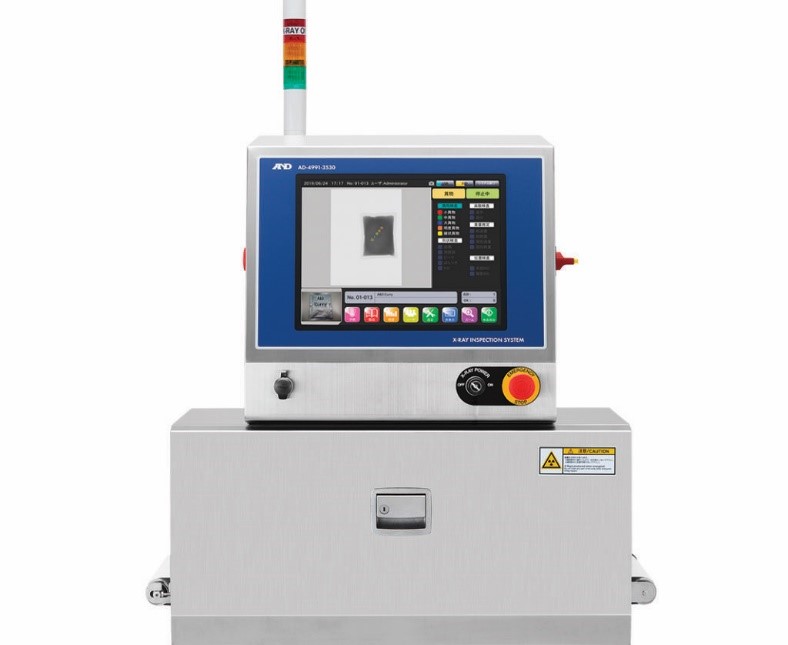
ProteX X-ray AD-4991-3530 – Advanced inspections such as shape detection, mass estimation, piece counting and more. Sanitary design complies with hygienic standards and is easily cleaned.
ProteX X-ray AD-4991-2515

ProteX X-ray AD-4991-2515 – Advanced inspections such as shape detection, mass estimation, piece counting and more. Sanitary design complies with hygienic standards and is easily cleaned.
ProteX X-ray AD-4991-2510

ProteX X-ray AD-4991-2510. X-ray inspection in food packaging and pharmaceutical applications is growing exponentially because of the versatility it provides.
The increased dynamic inspection capabilities provide great confidence and increased quality.
Top Industry Grade in-line Metal Detectors in Australia
Metal Detector AD-4976 350/170 aperture
1. Metal Detector AD-4976 350/170 aperture
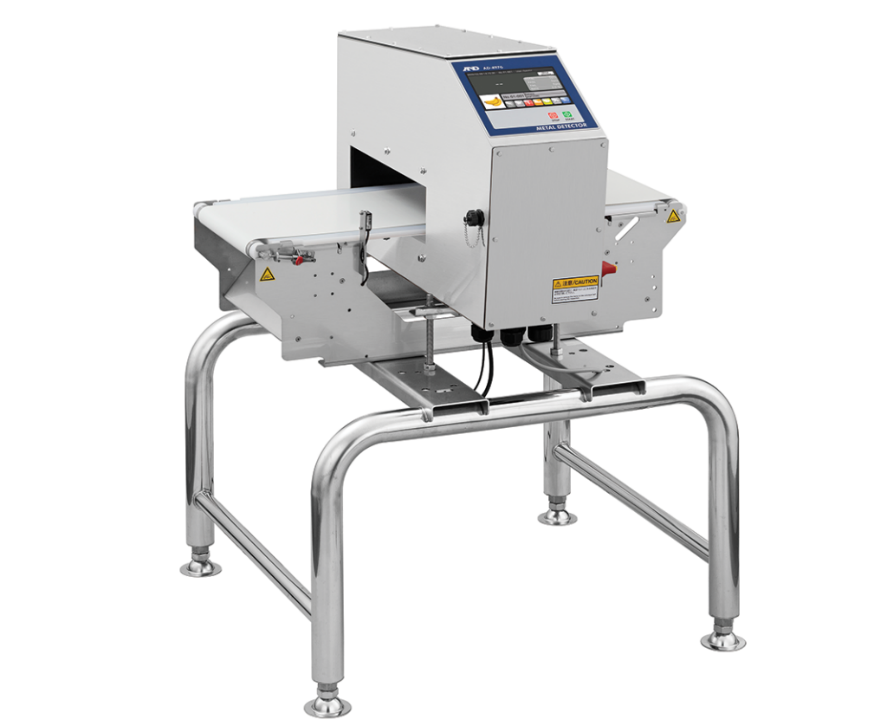
This industrial food grade metal detector is suitable for packages that do not exceed 80mm in overall height.
Aperture Size: 350 mm (W) x 170 mm (H)
2. Metal Detector AD-4976 350/100 aperture

This industrial food grade metal detector is suitable for packages that do not exceed 80mm in overall height.
Aperture Size: 350 mm (W) x 100 mm (H) | 13.7” x 3.9”
3. Metal Detector 450/250 aperture
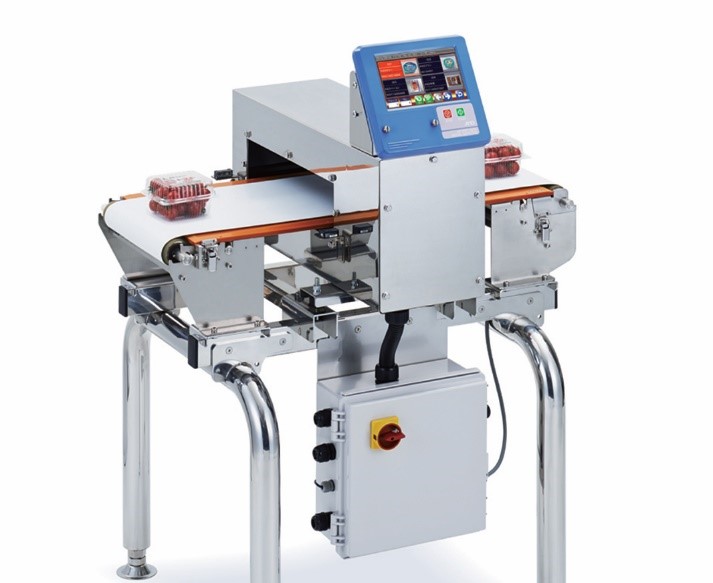
Our AD-4971 Series Metal Detectors are all IP65 rated (dust and water resistant, IP69K optional), which makes them ideal for the food and beverage industry as well as nutraceutical and pharmaceutical markets.
Aperture Size: 450 mm (W) x 250 mm (H).
4. Metal Detector 450/170 aperture

Our AD-4971 Series Metal Detectors are all IP65 rated (dust and water resistant, IP69K optional), which makes them ideal for the food and beverage industry as well as nutraceutical and pharmaceutical markets. Aperture Size: 450 mm (W) x 170 mm (H).
5. Metal Detector 350/250 aperture

Our AD-4971 Series Metal Detectors are all IP65 rated (dust and water resistant, IP69K optional), which makes them ideal for the food and beverage industry as well as nutraceutical and pharmaceutical markets. Aperture Size: 350 mm (W) x 250 mm (H)
6. Metal Detector 350/170 aperture

Our AD-4971 Series Metal Detectors are all IP65 rated (dust and water resistant, IP69K optional), which makes them ideal for the food and beverage industry as well as nutraceutical and pharmaceutical markets. Aperture Size: 350 mm (W) x 170 mm (H).
7. Metal Detector 350/100 aperture

The most compact, food grade metal detector, this system is suitable for packages that do not exceed 80mm in overall height.
Aperture Size: 350 mm (W) x 100 mm (H) | 13.7” x 3.9”

